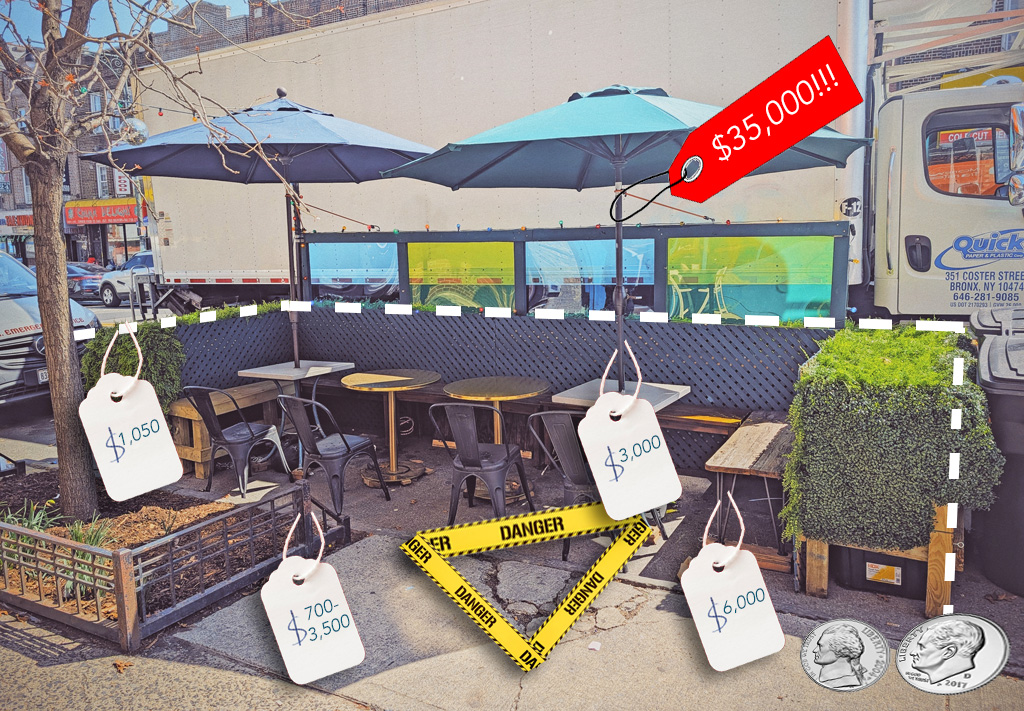 Car & Travel magazine is published by the Automobile Club of New York, also known as AAA. In addition to being the friendly guys who schlep out at a moment's notice to tow your broken-down car, the Automobile Club has, over the course of decades, done everything in its power to ensure that nothing like congestion pricing will ever be implemented in New York City. They even opposed park-o-meters when they were first introduced in the 1930's.
Car & Travel magazine is published by the Automobile Club of New York, also known as AAA. In addition to being the friendly guys who schlep out at a moment's notice to tow your broken-down car, the Automobile Club has, over the course of decades, done everything in its power to ensure that nothing like congestion pricing will ever be implemented in New York City. They even opposed park-o-meters when they were first introduced in the 1930's.
This month's issue of Car & Travel, sent to New York area AAA members for free, offers two must-read articles. First there's the cover story, "6 Big Myths About Pedestrian Safety." It leads with this: "People who tout walking as a healthy activity have obviously never lived in New York." Only three other states, car-worshipping California, Florida and Texas, have higher annual pedestrian death and injury tolls. For the Automobile Club of New York, the inside of a car is the safest, healthiest place to be. Never mind that New York state might have lots of pedestrian injuries and fatalities because it happens to have a city in it with more walkers than any other place in North America.
The article goes on to claim that "All things considered, drivers and pedestrians share blame pretty much equally" when pedestrians are run over, and suggests that the next time you plan to go for a walk around the block, "Experts recommend carrying a flashlight and wearing reflective or retroreflective clothing." And don't forget to wave your hands in the air as you cross the street, kids!
But the real must-read in this month's Car & Travel is the lead editorial, "Paying to Park on Your Own Street." Considering that the Automobile Club is the heavy-weight of anti-congestion pricing lobbying groups, the article provides some valuable insight into traffic-relief opponents' communication strategy for the coming months:
1. Appear reasonable and open-minded.
As we've seen with various legislators, the editorial doesn't directly come out against congestion pricing. Instead it "raises concerns" and focuses on "unanswered questions" and suggest that there is a "lack of detail in the Mayor's plan."
2. Turn the issue into Manhattan vs. Everyone Else.
Whatever your opinion about the need for congestion pricing, the Automobile Club writes, "the plan raises concerns for residents just outside the pricing zone." The main concern? Congestion pricing will increase traffic on alternate routes and turn bordering neighborhoods into "vast parking lots as drivers try to avoid the pricing zone." There is, of course, no mention that in study after study "there continues to be no evidence of adverse traffic impacts on roads surrounding the charging zone" in London.
3. Play the "class card."
Not surprisingly, Manhattan vs. Everyone Else quickly evolves into class warfare. The Automobile Club wonders aloud: Will congestion pricing limit "a nonresident's ability to visit certain, perhaps, more affluent, neighborhoods?" Never mind that only 14% of trips to the Central Business District are done by car, that 78% of Manhattan households don't own a vehicle, and that those who do own cars in and around New York City tend to have significantly more income than those who do not.
4. Frame congestion pricing as a "privatization" scheme.
Not only are wealthy, elite Manhattanites and their Republican mayor trying to prevent the rest of us from visiting their neighborhoods, they're trying to "privatize" public streets.
5. Focus on parking
Perhaps most notable, this editorial's congestion pricing critique focuses almost entirely on parking. PlaNYC authorizes the possible establishment of residential parking permit zones to help ensure that neighborhoods near transit hubs don't become the "vast parking lots" noted above. Yet, the editorial suggests that this "cure could be worse than the disease" by "unfairly excluding nonresidents who work, shop, dine, attend school or have other legitimate reasons for parking in the area." Here's the kicker:
Before our elected officials toss out the "public" in our public streets, they should think carefully about the effect this "Balkanization" of neighborhoods may have on our freedom of movement and the economic viability of neighborhood merchants.
As we've seen here on Streetsblog, parking is the flashpoint of so many neighborhood-level Livable Streets battles. Parking space -- or a lack thereof -- is the never-ending obsession of Community Boards and neighborhood groups. If anyone knows that, it's the Automobile Club of New York.
Addendum: While you're enjoying this month's Car & Travel check out the article suggesting Central Park as a motoring destination. Thanks to the genius of Olmstead and Vaux's transverse Drives, the Automobile Club writes, "the traffic never intrudes." Thanks also to Transportation Alternatives' decades-long Car-Free Central Park campaign that is actually almost true.





